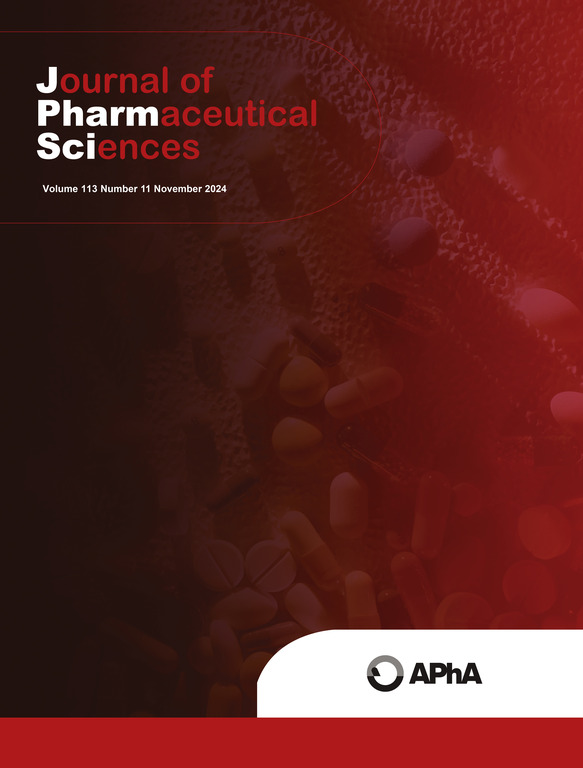Population pharmacokinetics and dosing simulations of meropenem in septic critically ill patients with complicated intra-abdominal infection or pneumonia
IF 3.7
3区 医学
Q2 CHEMISTRY, MEDICINAL
引用次数: 0
Abstract
Objectives
Meropenem pharmacokinetics (PK) may be altered in septic critically ill patients with complicated intra-abdominal infections (cIAI) and pneumonia. We aimed to evaluate the covariates affecting meropenem PK and the performance of different dosing regimens to optimize the PK/pharmacodynamic target.
Methods
Population PK analysis was performed using non-linear mixed-effects modeling. The final model was validated and used to simulate meropenem exposure to assess the probability of attaining the 100 %ƒT>MIC target.
Results
Forty-six and 14 patients were respectively enrolled for PK analysis and external validation. A one-compartment linear model adequately described the data of 226 concentrations. The typical clearance (CL) and volume of distribution (Vd) were 9.69 L/h and 27.4 L, respectively. Septic shock from cIAI (cIASS) and actual body weight were significant covariates for meropenem Vd in addition to the influential covariates of creatinine clearance (CLCR-CG) and augmented renal clearance for CL. External validation showed the robustness and accuracy of this model. Simulation results proposed continuous infusion (CI) dosing regimens of meropenem against pathogens with MICs ≥ 2 mg/L in patients with cIASS and CLCR-CG ≥ 60 mL/min.
Conclusions
For the patients with cIASS and CLCR-CG ≥ 60 mL/min, CI meropenem is proposed for treatment of less sensitive pathogens with MICs ≥ 2 mg/L.
美罗培南在患有复杂腹腔内感染或肺炎的化脓性重症患者中的群体药代动力学和剂量模拟。
目的:患有复杂腹腔内感染(cIAI)和肺炎的败血症重症患者的美罗培南药代动力学(PK)可能会发生改变。我们旨在评估影响美罗培南药代动力学的协变量以及不同给药方案的性能,以优化药代动力学/药效学目标:采用非线性混合效应模型进行了人群 PK 分析。方法:采用非线性混合效应模型进行人群 PK 分析,验证最终模型并用于模拟美罗培南暴露,以评估达到 100%ƒT>MIC 目标的概率:分别有46名和14名患者参加了PK分析和外部验证。单室线性模型充分描述了226个浓度的数据。典型清除率(CL)和分布容积(Vd)分别为 9.69 升/小时和 27.4 升。除了影响CL的肌酐清除率(CLCR-CG)和增强肾脏清除率这两个协变量外,来自cIAI的脓毒性休克(cIASS)和实际体重也是影响美罗培南Vd的重要协变量。外部验证表明了该模型的稳健性和准确性。仿真结果表明,针对MICs≥2 mg/L的病原体,美罗培南可用于cIASS和CLCR-CG≥60 mL/min的患者:对于CIASS和CLCR-CG≥60 mL/min的患者,建议使用CI美罗培南治疗MIC≥2 mg/L的不太敏感的病原体。
本文章由计算机程序翻译,如有差异,请以英文原文为准。
求助全文
约1分钟内获得全文
求助全文
来源期刊
CiteScore
7.30
自引率
13.20%
发文量
367
审稿时长
33 days
期刊介绍:
The Journal of Pharmaceutical Sciences will publish original research papers, original research notes, invited topical reviews (including Minireviews), and editorial commentary and news. The area of focus shall be concepts in basic pharmaceutical science and such topics as chemical processing of pharmaceuticals, including crystallization, lyophilization, chemical stability of drugs, pharmacokinetics, biopharmaceutics, pharmacodynamics, pro-drug developments, metabolic disposition of bioactive agents, dosage form design, protein-peptide chemistry and biotechnology specifically as these relate to pharmaceutical technology, and targeted drug delivery.

 求助内容:
求助内容: 应助结果提醒方式:
应助结果提醒方式:


